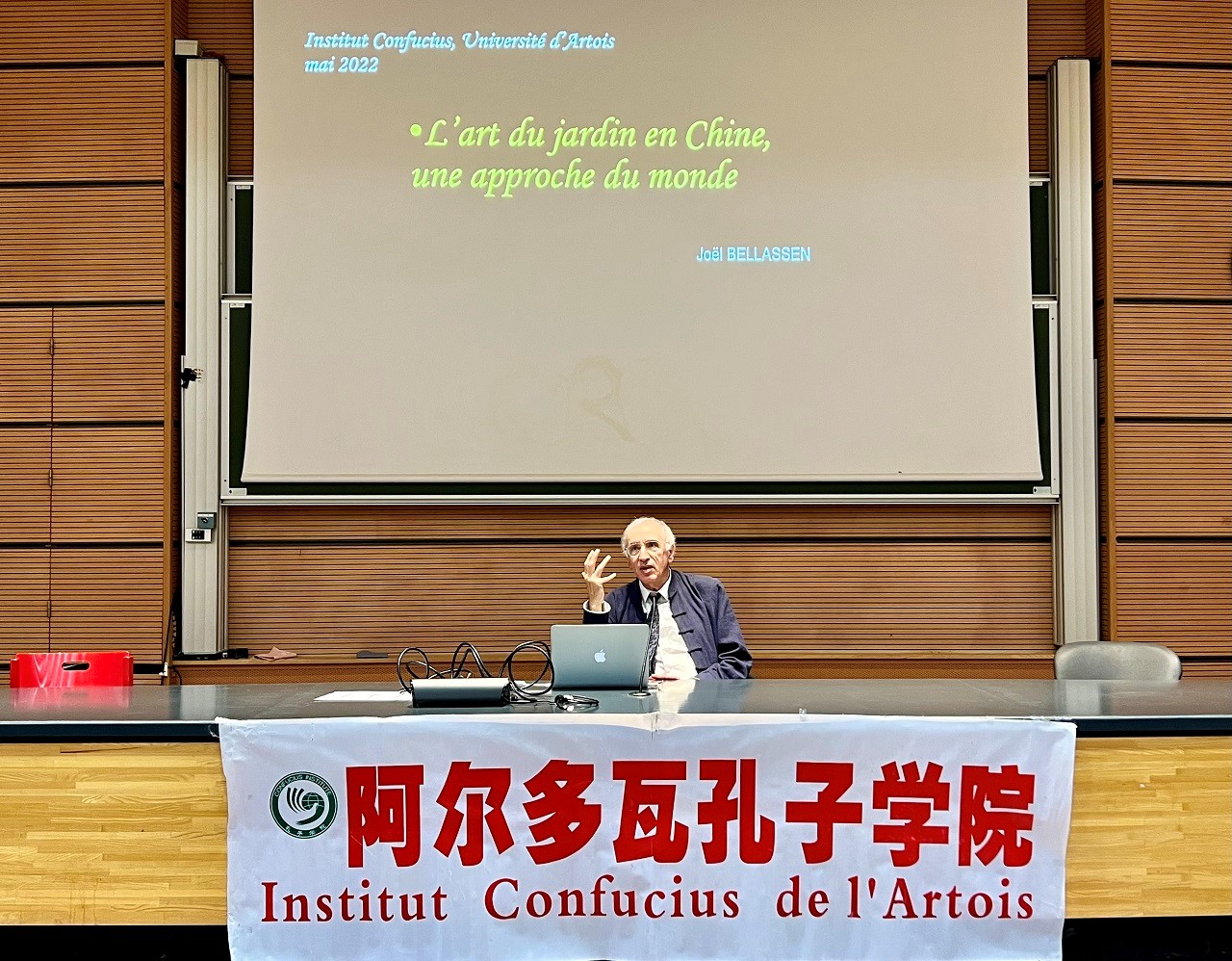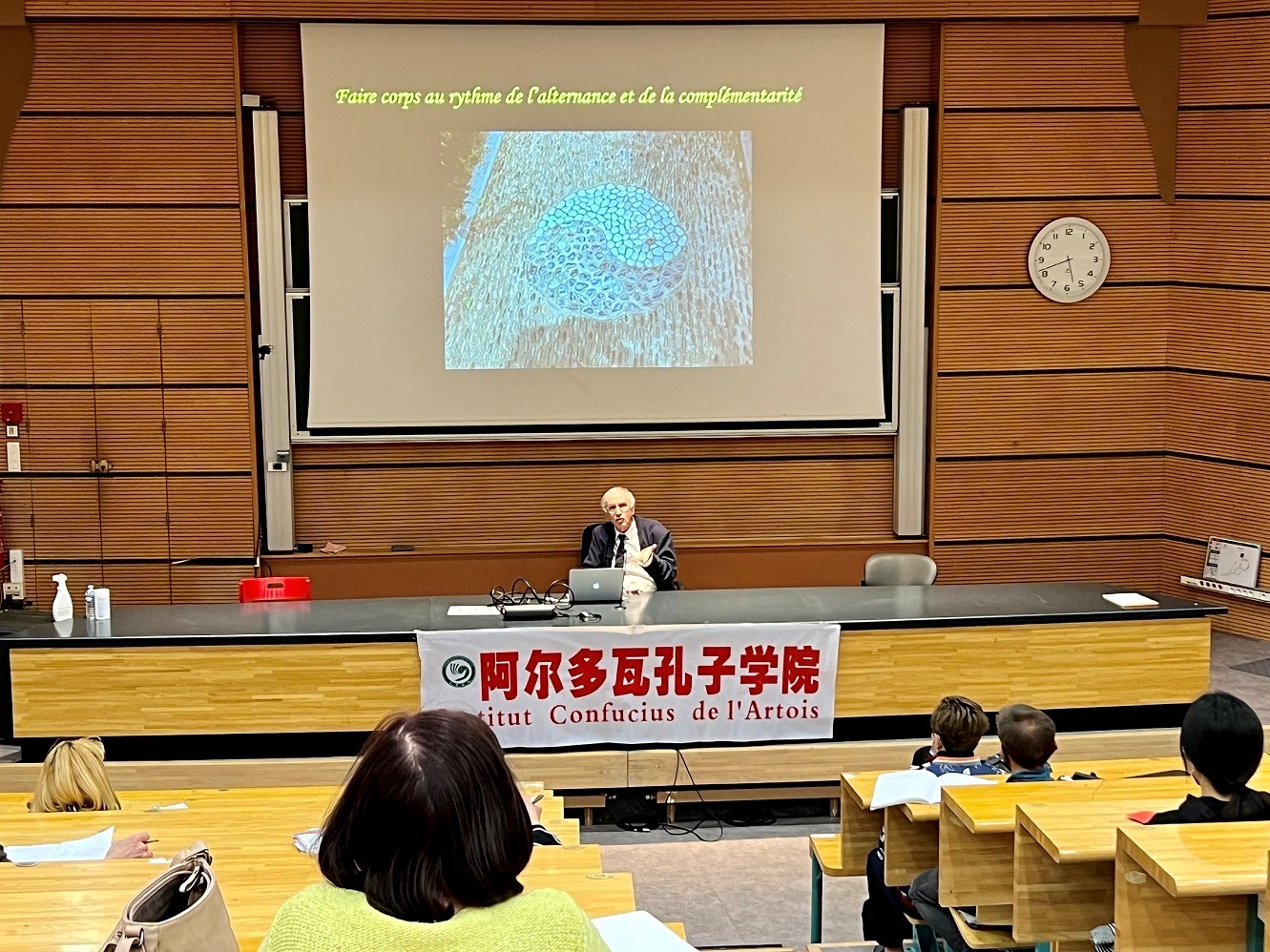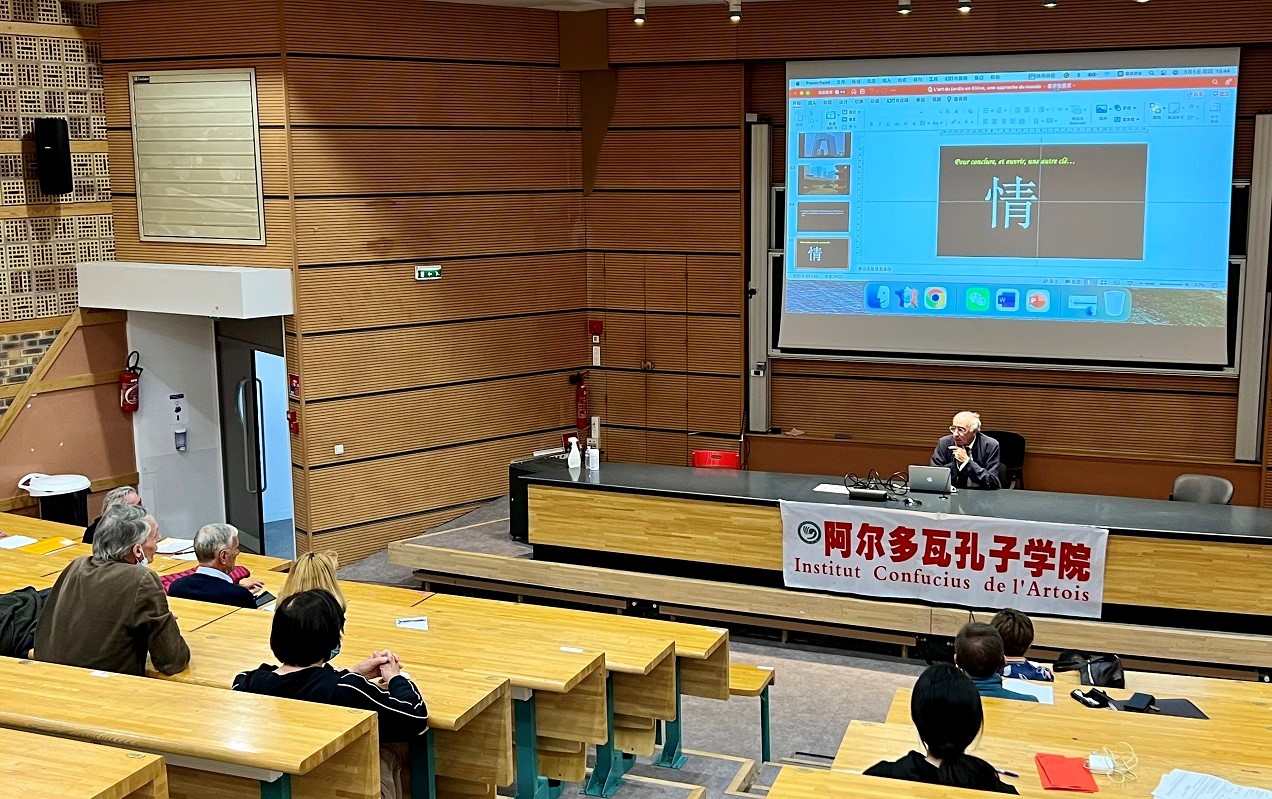
当地时间2022年5月5日,阿尔多瓦孔子学院邀请白乐桑教授(Joël Bellassen)于阿尔多瓦大学丘吉尔报告厅举办了一场关于“中华园艺”的讲座。此次久违的线下讲座在新冠疫情依然严重的情况下如期举行,吸引了近三十位听众,在场人员均保持适当安全距离。
下午5点,白乐桑教授开始他的演讲。首先,他指出个人身份的主要组成部分包括语言和写作、饮食、价值观以及信仰。此处人类身份的最后一个术语正是与中国的园林艺术密切相关。无论是中文、日文、法文,还是英文的“园林艺术”,皆为某种特定世界观的映射。它不同于充满抽象的纯粹和沉思的日式禅宗园林,亦不同于以秩序和对称为特征、反映人为和自然设计直接关系的法式园林,中国园林表面上明显呈现出的混合的,实际上是一种和谐,即“天人合一”,人与自然的融合。最后,他总结出中国园林设计的一个主要原则就是将主观与客观交织在一起,这是从行人的角度而考虑的,如曲折小径的例子所示。
讲座期间,白乐桑教授还提起并分析了在中国公园里经常上演的事情,以及是什么使中国公园的生活充满活力?他将其称作极度接近中国文化真实性活动的福地,从地上的水写书法,到露天合唱团再到功夫武术,所有活动融汇成一个深刻构建中国文化认同的概念:“养生”。
最后,白乐桑教授回答了三位热情听众的提问。本次讲座于晚上7点结束。
(撰文/ 徐萌)

Le prof. Joël Bellassen a introduit sa conférence en énonçant les grandes composantes de l'identité d'une personne,à savoir la langue et l'écriture, le manger et les valeurs et croyances. C'est ce dernier terme de l'identité humainequi est en lien étroit avec l'art du jardin chinois. L'art du jardin, qu'il soit chinois, japonais, français ou anglais, est le reflet et la projection d'une approche du monde spécifique. A l'opposé du jardin Zen japonais, tout en épure abstraite et en recueillement,ou du jardin à la française, reflétant la relation frontale de l'homme agissant et dessinant la nature, avec comme caractéristiquesl'ordre et la symétrie, le jardin chinois donne à voir un apparent désordre, qui est en fait une fusion harmonieuseentre l'homme et la nature. Enfin, un principe majeur à la base de la conception du jardin chinois est le faitque le jardin entremêle le subjectif et l'objectif : il a été pensé du point de vue du promeneur, comme le montre l'exemple desallées en zigzag.
Dans une certaine partie, Joël Bellassen a évoqué et analysé ce qui se passe dans les parcs, ce qui anime la vie des parcs.
Il les présente comme le refuge d'activités au plus près de l'authenticité culturelle chinoise, de la calligraphie à l'eausur le sol aux chorales en plein air, en passant par les arts martiaux, autant d'activités relevant d'une notionstructurant profondément l'identité culturelle chinoise : "nourrir le vivant" (yangsheng).
Joël Bellassen
The professor Joël Bellassen introduced his lecture by stating the main components of a person's identity, namely language and writing, eating and values and beliefs. It is this last term of human identity that closely related to Chinese garden art. The art of the garden, whether Chinese, Japanese, French or English, is the reflection and projection of a specific approach to the world. In contrast to the Japanese Zen garden, all abstract purity and contemplation, or the French garden, reflecting the frontal relationship of man acting and designing nature, with its characteristics of order and symmetry, the Chinese garden shows an apparent disorder, which is in fact a harmonious fusion between man and nature. Finally, a major principle underlying the design of the Chinese garden is the fact that the garden intertwines the subjective and the objective: it has been designed from the point of view of the walker, as shown by the example of the zigzag paths.
In a certain part, Joël Bellassen evoked and analyzed what happens in Chinaparks, what animates the life of the parks.
He presents them as a refuge for activities that are as close as possible to Chinese cultural authenticity, from calligraphy with water on the ground to open-air choirs and martial arts, all of which are part of a concept that deeply structures Chinese cultural identity: "nourishing the living" (yangsheng).
Nicolas Narcyz


